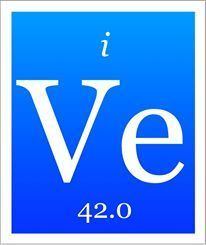Hosted by Derek Muller Language English Debut January 2011 | Genre Education, Science Length 2-12 minutes per video Provider YouTube | |
 | ||
Veritasium is an English-language educational science channel on YouTube created by Derek Muller, a physicist, in 2011. The videos range in style from interviews with experts, such as 2011 Physics Nobel Laureate Brian Schmidt, to science experiments, dramatisations, songs, and—a hallmark of the channel—interviews with the public to uncover misconceptions about science. As of 6 March 2017 the main channel has 218 uploads, 3,978,605 subscribers and 324,881,395 total views; the secondary channel, 2Veritasium, has 42 uploads, 453,837 subscribers, and 13,057,806 total views. His third channel, Sciencium, was created to be dedicated to science videos, and currently has 4 uploads, 232,880 subscribers and 1,276,997 total views.
Contents
Videos
Veritasium videos have received critical acclaim. At Science Online 2012, “Mission Possible: Graphene” won the Cyberscreen Science Film Festival and was therefore featured on Scientific American as the video of the week.
A video debunking the common misconception that the moon is closer than it is was picked up by CBS News.
Two early successful Veritasium videos demonstrate the physics of a falling Slinky toy. The videos explain the following: when a slinky is held dangling vertically and then released, it can be observed in slow motion that the bottom end does not begin to move until the entire slinky has collapsed, making it look as if the slinky was defeating gravity (i.e. floating). This counter-intuitive phenomenon inspired a wealth of media coverage, including the Toronto Star, NPR, and a segment on the BBC show QI. Muller also created a segment on the topic for the Australian Broadcasting Corporation show Catalyst.
Muller has a second and a third channel, 2veritasium, which he uses for things such as behind-the-scenes footage and for communicating with viewers, and Sciencium, his newest channel, which is a channel dedicated to discoveries in science.
Name
The name "Veritasium" is a combination of the Latin word for truth, Veritas, and the suffix common to many elements, -ium. This creates "Veritasium", an element of truth, a play on the popular phrase and a reference to scientific elements.
